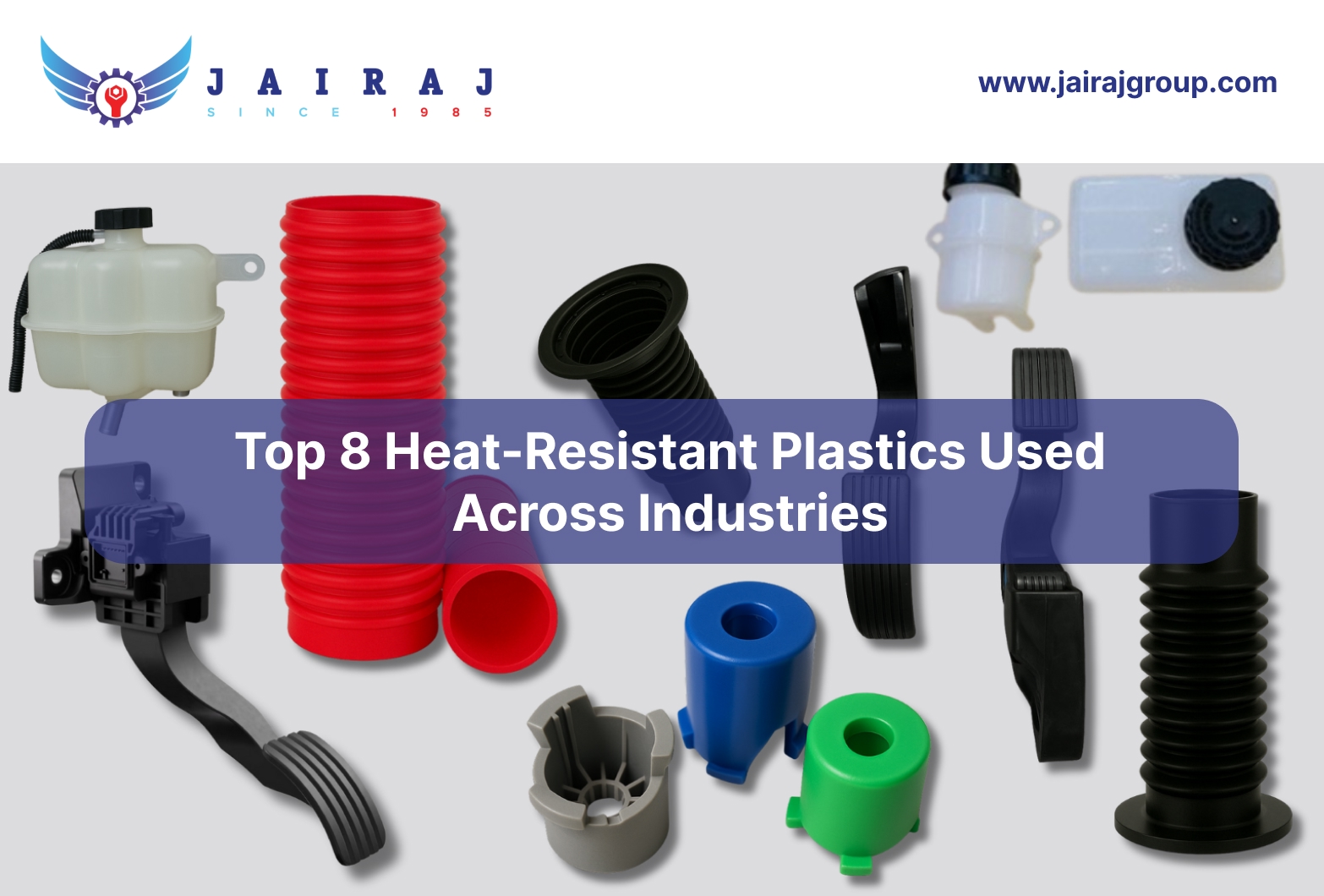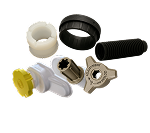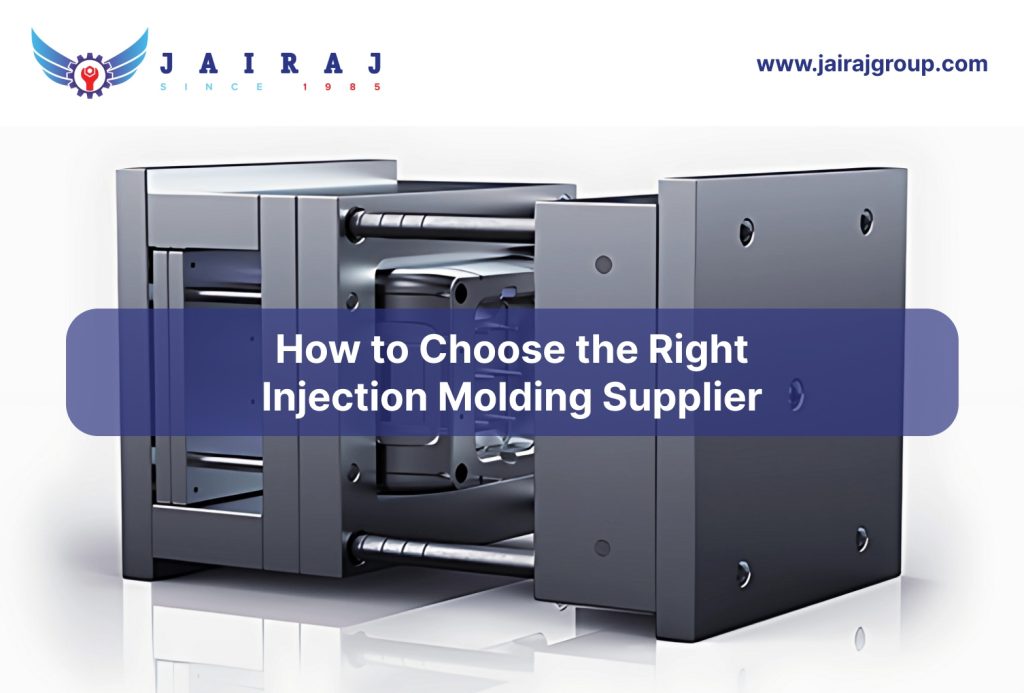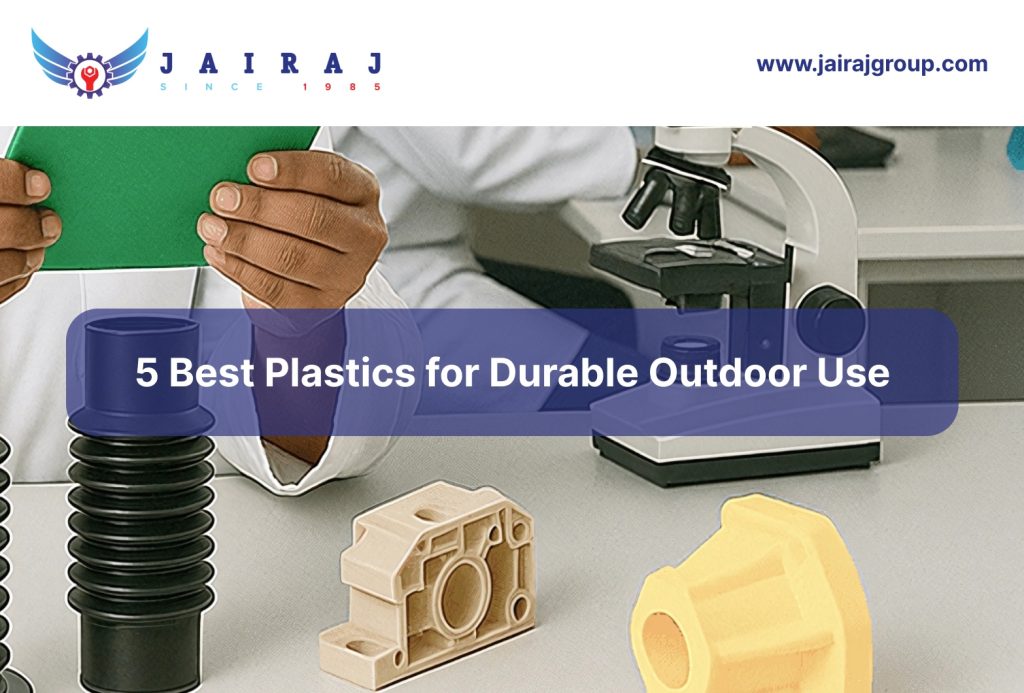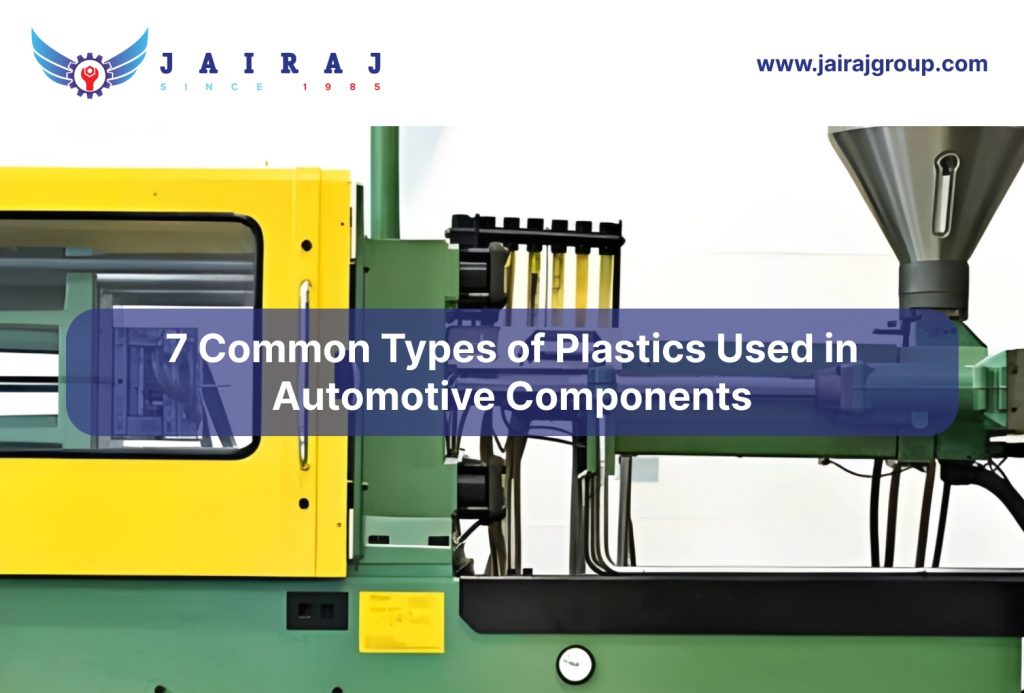High-temperature plastics play a vital role for OEMs and Tier-1 suppliers across industries like automotive, mobility, heavy equipment, white goods, defense, aerospace, and emerging sectors such as railways, drones, and solar. VValued at around $18.7 billion in 2024, the global market is expected to grow at a CAGR of 5.8%, reaching $34.8 billion by 2035.
These plastics provide heat resistance, mechanical strength, and chemical stability, making them essential for engine components, electrical housings, and interior parts in vehicles, as well as high-performance applications in aerospace and defense.
This article helps procurement leaders, engineers, and managers choose the right heat-resistant plastics by outlining key types, applications, and factors affecting performance and cost.
Key Takeaways:
High-temperature plastics retain strength, shape, and chemical stability above 150°C for reliable performance.
They offer thermal stability, mechanical strength, chemical resistance, and durability under stress.
Key types include Nylon 6/66 (GF), PBT, Polycarbonate, PA 12, PEI, PEEK, PBI, and pDCPD.
Used in engine assemblies, electrical housings, fuel systems, and aerospace components.
Selection depends on operating conditions, properties, plastic type, manufacturing, and cost-performance balance.
To understand their use, let’s define them first.
What are High Resistant Plastics?
High-temperature or heat-resistant plastics are specially engineered polymers designed to retain strength, shape, and chemical stability at elevated temperatures, often above 150°C.
They fall into thermosets, which harden permanently when heated, and high-performance thermoplastics, which can melt and reform while retaining structural integrity above 150°C, with short-term stability up to 250°C.
High performance thermoplastics are further classified as semicrystalline, such as PBT, Nylon, and PP, with ordered regions and defined melting points for rigidity and stability, and amorphous, such as PC, ABS, and PVC, with disordered structures that soften gradually, offering toughness and design flexibility.
These plastics are essential in modern industries for reliable performance under extreme conditions. Their advantages span multiple areas:
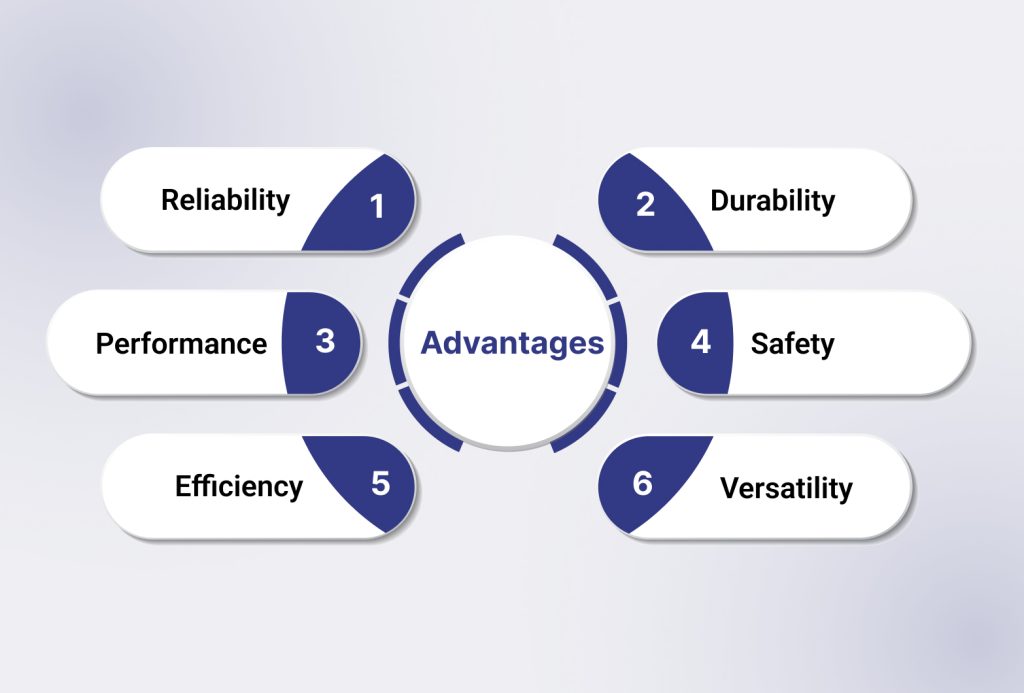
- Reliability: Maintains structural integrity in high-heat environments, ensuring components like dust covers, bellows, dirt shields, and brake pedals function safely.
- Durability: Extends lifespan of parts exposed to continuous heat, such as piston rings, bobbins, PCB covers, and engine assemblies, reducing maintenance.
- Performance: Preserves rigidity, toughness, and dimensional stability under stress, vital for bumper caps, quick connectors, fuel line connectors, and oil dip sticks.
- Safety: Prevents failures in critical systems, minimizing risks in automotive, aerospace, and industrial applications; examples include guide springs, accelerator pedals, and clamps.
- Efficiency: Supports high-performance designs handling thermal, mechanical, and chemical stresses, for components like meter covers, storage tanks, and display housings.
- Versatility: Applicable across automotive, machinery, electronics, aerospace, and energy systems, including handle grips, tube guides, brackets, and shockers & suspension components.
These benefits make high-temperature plastics indispensable for industries aiming for durability, reliability, and optimal performance under challenging conditions.
However, jeat stress is fast becoming one of the top failure modes in polymer-based components. For procurement and engineering teams, this is turning material choice from a cost item into a risk lever.
Key drivers pushing the shift:
- Thermal loading in compact assemblies: Engine bays and EV battery enclosures run hotter due to tighter packaging.
- Lightweighting vs. metals: Replacing steel or aluminum requires plastics that maintain structural integrity above 200 °C.
- Compliance risk: Standards like UL94, IATF 16949, and PPAP demand thermal stability proof, adding audit pressure.
- Lifecycle economics: Every field failure from heat deformation can wipe out savings from low-cost resins.
Next, consider thermal behavior.
Thermal Properties of Heat-Resistant Plastics
Choosing the right high-temperature plastic depends on understanding its thermal behavior. Key factors like melting point, heat deflection, and flame resistance guide the design of durable, reliable, and efficient components.
The table below highlights the main thermal properties to consider:
| Property | Key Points |
|---|---|
| Melting Point | Semi-crystalline plastics have a precise point; amorphous plastics soften gradually. |
| Heat Deflection Temperature (HDT) | Measures stiffness under load at elevated temperatures. |
| Continuous Operating Temperature | Maximum safe temperature for long-term use; affected by chemicals or water. |
| Glass Transition Temperature (Tg) | Ductile-to-brittle transition indicates heat tolerance. |
Also read: Precision Components from Advanced Polymers for Automotive and Aerospace Applications
Next, let’s take an overview of the most widely used options of high temperature plastic materials.
8 Best High Resistant Plastics for Critical Applications
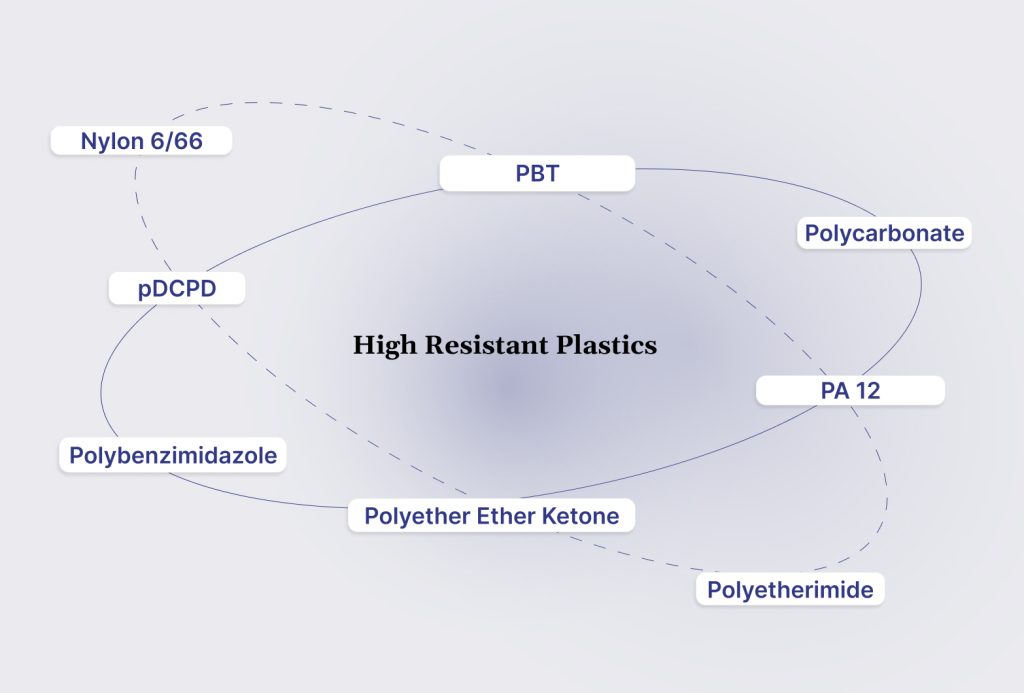
High-temperature plastics are engineered to maintain strength, shape, and chemical stability under extreme heat, often above 150°C. These materials are crucial for industries where component reliability, durability, and safety are non-negotiable.
Below are the top heat-resistant plastics widely used in automotive, aerospace, electronics, and industrial applications.
1. Nylon 6/66 (GF Grades)
Maximum Temperature: 150–260°C (302–500°F)
Nylon 6/66 reinforced with glass fibres combines high thermal stability with excellent mechanical strength. It is commonly used in engine assemblies, brake & accelerator pedals, bushings, fuel line connectors, and other load-bearing automotive components.
Advantages: High rigidity for structural applications, excellent chemical resistance for harsh environments, and dimensional stability under thermal and mechanical stress.
Disadvantages: Moisture absorption can reduce mechanical performance, limited UV resistance may cause degradation over time, and processing requires careful control to avoid warping or shrinkage.
2. PBT (Polybutylene Terephthalate)
Maximum Temperature: 150–220°C (302–428°F)
PBT (Polybutylene Terephthalate) is a semicrystalline thermoplastic prized for its thermal stability, chemical resistance, and excellent electrical insulation.
It is commonly used in automotive components such as piston rings, bobbins, PCB covers, relay mountings, plastic bellows & struts and terminal bases, as well as industrial and electrical parts requiring precision and durability.
Advantages: Dimensional stability, low moisture absorption, excellent electrical insulation, low shrinkage, easy to mold.
Disadvantages: Relatively brittle under impact, limited high-temperature creep resistance, may require reinforcement for heavy-load applications
Also read: Automotive Interior & Exterior Plastic Parts Manufacturing: Trends and Innovations in 2025
3. Polycarbonate (PC)
Maximum Temperature: 130–150°C (266–302°F)
Polycarbonate is an amorphous thermoplastic combining toughness, heat resistance, and clarity. It is commonly used for meter covers, battery housings, display housings, and other components where impact strength and transparency are essential.
Advantages: High impact resistance, excellent transparency, good dimensional stability, design flexibility
Disadvantages: Susceptible to scratching, moderate chemical resistance, lower stiffness than glass-filled nylons, moderate UV stability
4. PA 12 (Polyamide 12)
Maximum Temperature: 150–200°C (302–392°F)
PA 12 is a high-performance polyamide that maintains mechanical and chemical stability under elevated temperatures.
It is commonly used in automotive and industrial components such as oil level windows, bushings, fuel line connectors, and quick connectors, where durability and chemical resistance are essential.
Advantages: Low moisture absorption, excellent chemical resistance, good flexibility, easy to process
Disadvantages: Lower stiffness compared to glass-filled nylons, moderate UV resistance, limited high-temperature capability compared to other high-performance plastics
5. Polyetherimide (PEI / ULTEM®)
Maximum Temperature: 170°C continuous, short-term up to 219°C (338–426°F)
PEI is an amorphous, high-strength thermoplastic with excellent chemical, thermal, and flame resistance. It maintains structural integrity under high heat, making it suitable for circuit boards, aerospace components, medical devices, and fire-blocking applications.
Advantages: PEI offers excellent dielectric strength, superior creep resistance, high thermal and chemical stability, and inherent flame retardancy.
Disadvantages: It is relatively expensive, has lower impact resistance compared to PEEK, and can be sensitive to certain polar solvents.
6. Polyether Ether Ketone (PEEK)
Maximum Temperature: 250–310°C (482–590°F), melting point 371°C (700°F)
PEEK (Polyether Ether Ketone) is a semicrystalline, high-performance thermoplastic known for its metal-like durability.
It is widely used in aerospace components, automotive high-temperature parts like engine and transmission elements, medical devices, and industrial machinery where both heat resistance and mechanical performance are critical.
Advantages: Exceptional mechanical strength, chemical and wear resistance, high-temperature stability, low creep, excellent fatigue resistance, and compatibility with CNC machining and injection molding.
Disadvantages: High material cost, limited UV resistance, and susceptibility to attack by strong acids and halogens.
7. Polybenzimidazole (PBI)
Maximum Temperature: 343°C continuous in air, short-term 537°C (649–999°F)
PBI (Polybenzimidazole) is the most heat-resistant commercially available plastic, making it ideal for extreme applications such as firefighter protective gear, astronaut suits, and racecar driver safety equipment.
Advantages: Unmatched thermal stability with continuous service up to 343°C, excellent wear and chemical resistance, maintains mechanical properties under extreme heat, and inherently flame-proof.
Disadvantages: Extremely costly, very challenging to process and machine, and highly sensitive to notches or sharp corners, requiring careful part design.
8. Polydicyclopentadiene (pDCPD)
Maximum Temperature: 120°C (248°F)
Polydicyclopentadiene (pDCPD) is a custom-engineered thermoset polymer that offers excellent heat, chemical, and corrosion resistance while maintaining superior stiffness and impact strength.
Its unique combination of properties makes it suitable for applications such as corrosion-resistant chemical process equipment, septic tanks, and water treatment components.
Advantages: pDCPD combines heat and chemical resistance, supports parts of virtually any size or shape without production limitations, and provides excellent molding flexibility.
Disadvantages: It is a relatively new material with limited industrial applications and can be more expensive compared to conventional polymers.
Also Read: Plastic Injection Molding: Precision Thermoplastic Components
Finally, make your selection easier by focusing on these parameters.
How to Choose the Right High-Temperature Plastic?
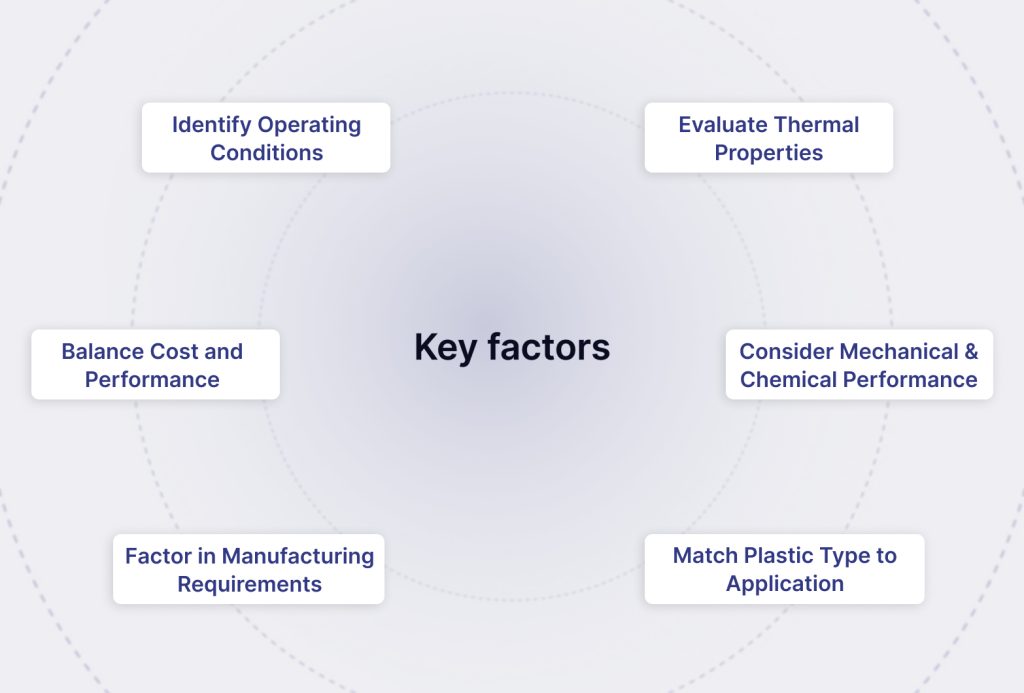
Procurement heads, program managers, quality leaders, and engineering managers face high-stakes decisions in sourcing and program execution.
In this high-pressure environment, heat-resistant plastics offer a reliable solution. These materials maintain strength, shape, and performance under extreme temperatures, reducing failures, extending component life, and supporting consistent quality.
Key factors to consider when selecting the best heat-resistant plastic include:
Identify Operating Conditions: Assess maximum temperatures, mechanical loads, chemical exposure, and electrical requirements to match the plastic’s capabilities.
Evaluate Thermal Properties: Review melting point, glass transition temperature (Tg), heat deflection temperature (HDT), and flame resistance to ensure stability under heat.
Consider Mechanical and Chemical Performance: Ensure rigidity, toughness, dimensional stability, and chemical resistance for reliable, long-lasting components.
Match Plastic Type to Application: Semicrystalline plastics like PBT, Nylon, and PP provide rigidity and stability, while amorphous plastics such as PC, ABS, and PVC offer impact resistance and design flexibility.
Factor in Manufacturing Requirements: Verify compatibility with injection molding or other processes, considering shrinkage, flow, and toolability.
Balance Cost and Performance: Select materials that optimize total cost of ownership by reducing maintenance and replacements while meeting performance needs.
Also read: How to Choose the Right Plastic Product Supplier for Automotive & Industrial Components
Next, we look at practical solutions for OEMs and Tier-1 suppliers using high-temperature plastics.
High-Temperature Plastic Solutions for OEMs & Tier-1s
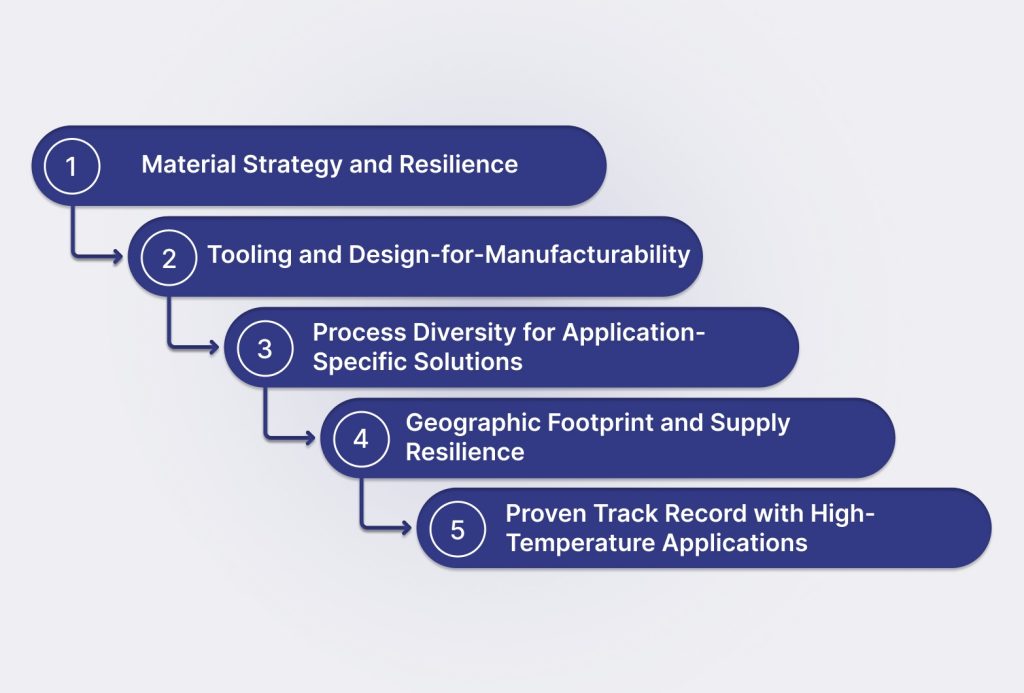
For OEMs and Tier-1 suppliers, the difference between a reliable component and a costly program delay often comes down to material expertise and supplier capability.
High-temperature plastics play a crucial role in ensuring components withstand heat, chemical exposure, and mechanical stress without compromising performance or program timelines.
JaiRaj Group has developed its capabilities around the key levers that drive success in high-temperature plastic applications:
1) Material Strategy and Resilience
With expertise across TPE / TPV, TPU, Hytrel, PBT, Nylon 6 / 66 / GF, PA 12, Polycarbonate, ABS / ABS + PC, Polyacetal (POM), PVC / TPE, and Polypropylene (PP / PPCP), JaiRaj helps OEMs balance heat resistance, mechanical strength, and cost.
2) Tooling and Design-for-Manufacturability
JaiRaj’s in-house tooling and mould development teams engage early in design reviews with simulation support. This reduces the risk of rework, ensures components meet performance requirements, and accelerates program approval timelines.
3) Process Diversity for Application-Specific Solutions
From injection, blow, and rotational moulding to extrusion, welding, and assembly, JaiRaj offers multiple processes under one roof. Customers can select the optimal manufacturing route, whether it’s precision moulding for PA 12 fuel line connectors, TPU dampers, or PC display housings ensuring performance and cost efficiency.
4) Geographic Footprint and Supply Resilience
With facilities in Faridabad, Manesar, Aurangabad, Sanand, and Rudrapur, JaiRaj’s plants are near India’s major automotive hubs. This network reduces logistics costs, shortens lead times, and provides backup capacity during supply disruptions.
5) Proven Track Record with High-Temperature Applications
With over 35 years of experience and certifications including IATF 16949, ISO, and CE, JaiRaj is a trusted partner for high-stakes programs and strategic solutions for Mobility Plastic Seating Solutions, Interior & Exterior Accessories and Precision Components from Advanced Polymers
Key materials and products include:
TPE / TPV; Dust covers, bellows, dirt shields
TPU, Estane GP60D, Hytrel: Rebound bumpers, dampers, bushes
PBT Arnite: Piston rings, bobbins, relay mountings, PCB covers, terminal bases
Nylon 6 / 66 / GF (30–50%): Bumper caps, fuel line connectors, brake and accelerator pedals, clamps, engine assemblies, general assembly parts
PA 12: Oil level windows, bushes, quick connectors, fuel line connectors
Polycarbonate: Meter covers, battery housings, display housings, cases
ABS / ABS + PC: Storage tanks, housings, inner trims, steering shrouds, painted parts, trumpets
Polyacetal (POM): Brackets, tube guides, choke levers, door assembly components
PVC / TPE: Handle grips, footrests, grommets, flaps, lever covers
Polypropylene (PP / PPCP): High-temperature resistant structural components
For procurement leaders, JaiRaj provides more than components; it delivers reliability, risk mitigation, and program continuity, ensuring OEMs and Tier-1s meet performance standards without compromising timelines or budgets.
Conclusion
Heat-resistant plastics play a key role in modern automotive and industrial applications. They influence part performance, safety, and overall program efficiency. For OEMs and Tier-1 suppliers, the goal is not just handling high temperatures but selecting materials that deliver reliability and cost-effectiveness.
Companies that integrate high-temperature plastics effectively achieve three major benefits:
Enhanced durability by preventing deformation, creep, and failure in critical components.
Extended operational life through resistance to heat, chemicals, and electrical stress.
Optimized lifecycle cost by reducing maintenance, replacements, and downtime.
For teams developing new parts or upgrading existing ones, JaiRaj Group offers material guidance and plant visits in Manesar, Sanand, or Aurangabad.
Contact JaiRaj Group to explore solutions for your requirements.
FAQs
1. What qualifies as a high-temperature plastic?
High-temperature plastics maintain their strength, shape, and dimensional stability when exposed to continuous heat above 150 °C. They are engineered to resist softening, creep, and thermal aging over long operating cycles.
2. How are they different from standard engineering plastics?
Conventional plastics like Nylon 6/66 or PBT start losing strength around 120–150 °C. High-temperature types such as PEEK, PPS, PEI, and PI remain stable at 200–300 °C, offering superior thermal, mechanical, and chemical resistance.
3. Where are these plastics used in automotive components?
They are used in under-hood parts, fuel system components, EV battery modules, sensors, and electrical housings, areas exposed to sustained heat, pressure, and corrosive fluids.
4. When should OEMs choose high-temperature plastics?
They should be used when parts face prolonged heat above 150 °C or thermal spikes beyond 180 °C, where conventional materials would deform or degrade prematurely.
5. How do they impact overall costs?
Although they cost more per kilogram, high-temperature plastics reduce part failures, warranty claims, and maintenance needs, lowering total lifecycle cost for critical components.
6. How can supply risks for these materials be reduced?
Securing dual resin sources, long-term supply contracts, and working with certified suppliers who maintain safety stocks helps ensure stable pricing and availability.

